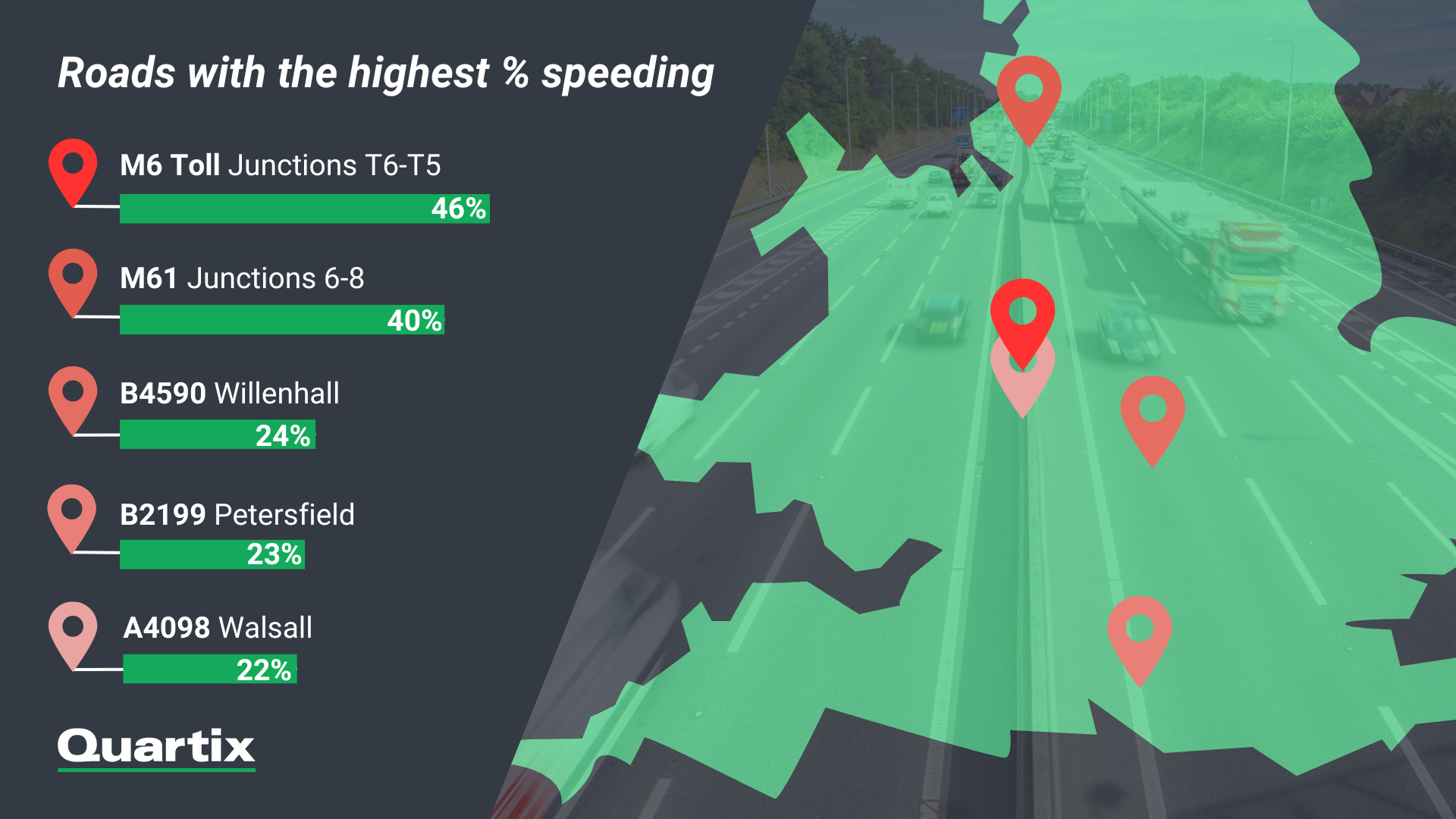The UK’s roads where incidents of speeding regularly occurs has been revealed in new analysis of vehicle data.
Quartix’s ‘SafeSpeed’ database shows that the M6 Toll near Birmingham tops the list, closely followed by the M61.
SafeSpeed reports on the relative speed of thousands of drivers every day and is used to form individual driver scores within Quartix’s fleet tracking system, which is used by more than 35,000 businesses worldwide.
Quartix driver scores not only assess a vehicle’s speed in relation to the designated speed limit on that road, they also rate a driver’s speed in relation to the average speed of other vehicles on that road.
Shown as a Relative Speed Score, that speed is all about the context of the road and is particularly helpful for rural roads when often it is not safe to drive at the speed limit.
Quartix customers can use the data generated about their own fleet to give a complete picture of their driving performance.
Once aggregated and anonymised the 663 million datapoints held within the Quartix’s SafeSpeed database provide a view into the speeding trends across the UK's road network.
The telematics company has used this data to pinpoint roads where speeding is most prevalent and highlights potential risk zones for road users.
Of more than 7,000 sample datapoints taken on the M6, almost half (46%) of vehicles were travelling in excess of the 70mph speed limit between junction T6 and T5.
Of more than 16,000 datapoints on the M61 near junction 6, it found that two-in-five vehicles (40%) were travelling in excess of the 70mph speed limit.

Mark Cartwright, head of commercial vehicle incident prevention at National Highways, said: “I think the kind of rich data that businesses can pull from systems such as Quartix is invaluable.
“I’ve always liked Quartix’s SafeSpeed feature. We know that speed is a significant cause of collisions and certainly makes them more serious.”
For business owners managing fleet vehicles, Quartix says that understanding these trends in high-risk driving behaviours is crucial.
Department for Transport (DfT) data, published in the summer, showed that there was a decrease in the number of drivers found guilty for speeding last year, but an increase in those sent for a speed awareness course.
Some 203,801 drivers were found guilty of a speed limit offence, a decrease of 8% compared to the previous year, but an increase of 85% since 2011.
The figures also show that 1.78 million drivers attended a speed awareness course in the UK, a 9% increase when compared to the previous year, and an increase of 131% since 2011.
























Login to comment
Comments
No comments have been made yet.